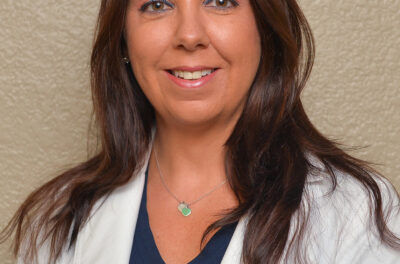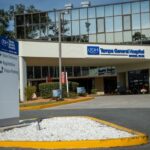.jpg) An innovative new technology developed with the help of a pioneering South Florida orthopaedic surgeon is revolutionizing the care of those with congenital or acquired leg length discrepancies. The technology, known as the PRECICE device, was developed in consultation with Dror Paley, M.D., FRCSC, by Ellipse Technologies, Inc. It is a non-invasive, adjustable remote-controlled system that uses a magnetic implant that is placed inside the bone to gently and precisely correct long-bone abnormalities.
An innovative new technology developed with the help of a pioneering South Florida orthopaedic surgeon is revolutionizing the care of those with congenital or acquired leg length discrepancies. The technology, known as the PRECICE device, was developed in consultation with Dror Paley, M.D., FRCSC, by Ellipse Technologies, Inc. It is a non-invasive, adjustable remote-controlled system that uses a magnetic implant that is placed inside the bone to gently and precisely correct long-bone abnormalities.Paley is the first surgeon in the U.S. to use the PRECICE device and performed the first three such procedures on December 1, 2011. Paley is an internationally recognized expert on limb-lengthening and the most experienced leg lengthening surgeon in the world. A native of Canada, he is the founder of the Paley Limb Lengthening Institute at St. Mary’s Medical Center in West Palm Beach, which attracts both pediatric and adult patients from all over the globe and offers highly specialized, advanced training to orthopaedic surgeons. Paley and his staff treat a broad range of orthopaedic conditions including congenital limb deformities, foot deformities, bone defects and skeletal dysplasias.
Leg length discrepancies can be the result of congenital anomalies, or may occur following accidental trauma to the leg, a disease process such as bone cancer or osteomyelitis, a deep infection of the bone. A major fracture that heals poorly can produce a leg length discrepancy. As Paley explains, the conventional approach to lengthening the femur or tibia bones has been an external fixation device. This is a complex procedure in which the bone is cut and attached with pins to an external device through the skin; it is gradually adjusted by the surgeon and as the bone heals, it lengthens. This process has been associated with a high rate of complications, including infection at the pin sites.
In 2001, the FDA approved the first implantable limb lengthening device called the intermedullary skeletal kinetic distractor, or ISKD. The ISKD lengthens the bone internally, eliminating the need for an external appliance. The ISKD is a telescopic rod implanted in the marrow cavity of the bone and is activated by movement. It is difficult to control the lengthening rate and therefore the ISKD involves a host of potential complications “The most important parameter in leg lengthening is the speed of lengthening,” Paley says. “The ISKD was unpredictable; it essentially had a mind of its own and so the rate of growth could not be controlled. Any movement of the patient could cause rapid growth. The standard growth is 1 milliliter per day, but the ISKD could accidentally generate as much as 5 milliliters per day, with potentially disastrous results, such as nerve damage, muscle contractions and lack of bone healing.”
The rate of lengthening problem is eliminated by the new PRECICE device, an implantable device that is precise, gentle and completely under the control of the physician. An electronically controlled magnet is placed inside the bone and responds to an external magnet, called an actuator, contained within a small device that resembles a hand-held massager. When the actuator is brought close enough to the rod inside the bone, it “captures” the magnet, causing it to rotate. “It takes hundreds of rotations to move a milliliter, “says Paley. “It is very, very gentle. Compared to this, the ISKD was a runaway train.”
The PRECICE device can be used to treat adolescents and adults. Children under the age of 10, whose bones are still growing, are not candidates for PRECICE, but Paley anticipates that a smaller device that meets their specialized needs will be developed in the future. He views limb-lengthening surgery as a dynamic, growing orthopedic specialty with an exciting future. “Limb lengthening is an incredible field,” he says. “It makes such a difference in quality of life for patients. Twenty five years ago, before limb lengthening surgery was possible, people suffered tremendously; amputation and prosthetics were the only solution to large discrepancies. Technology like the PRECICE is encouraging orthopaedic surgeons to develop a new mindset. At the conferences where I speak about this, I find that they are eager to learn the new techniques.”
For Paley, this work is challenging and enormously satisfying. The PRECICE represents a breakthrough in limb-lengthening surgery and the dawn of a new era in orthopaedics. “This minimally invasive approach significantly reduces the potential for complications during recovery and healing,” he says.
Paley makes an annual trip to Haiti with his Paley Foundation, a non-profit that provides surgery and other medical services to those who would not otherwise receive it. He and his crew were in Haiti nine weeks after the earthquake and had an unforgettable experience. “There were endless lines of injured people and we did non-stop surgeries. The level of need there is indescribable; it’s exhausting but you know you are helping and you don’t want to leave. We teach the locals so that they can be more self sufficient. This year, we plan to go to Nicaragua too.”
The Paley Advanced Limb Lengthening Institute is located at St. Mary’s Medical Center, a 463-bed acute care hospital in West Palm Beach that offers a broad range of medical and surgical services.


























